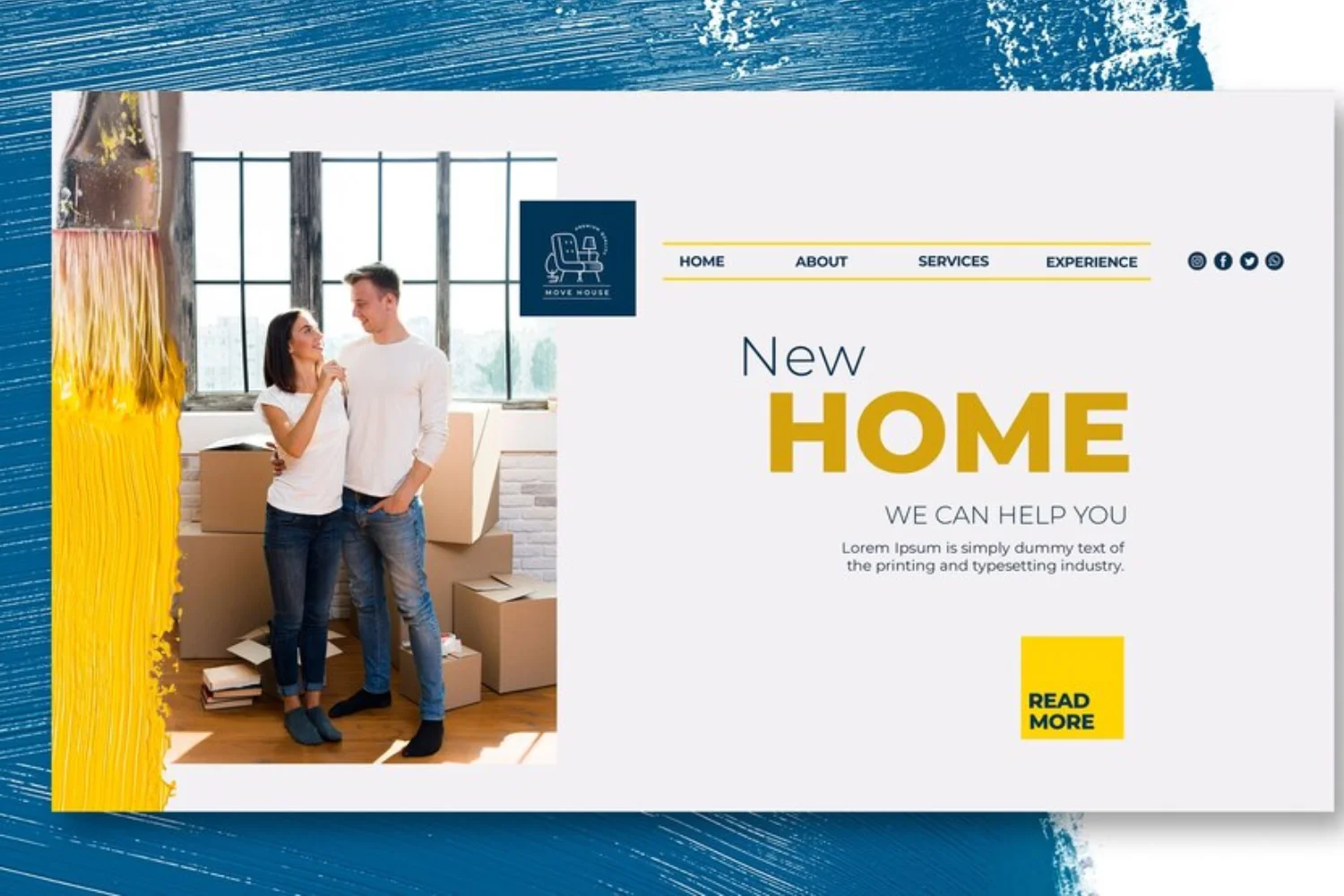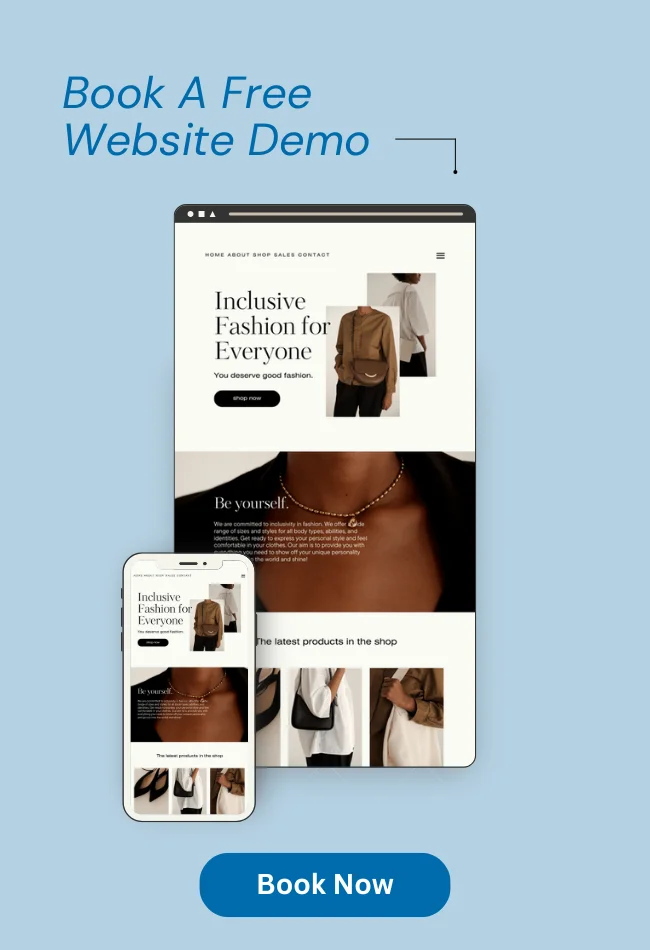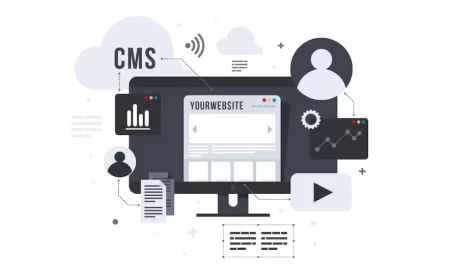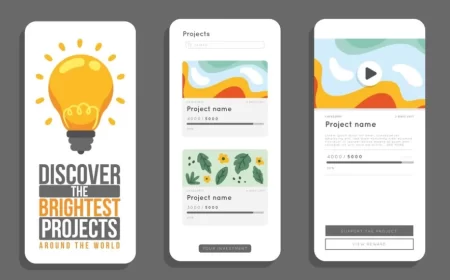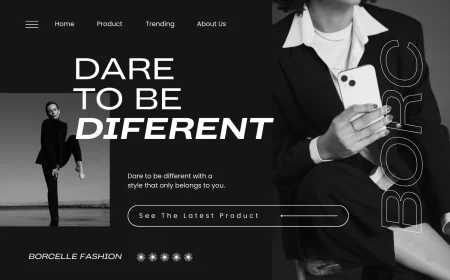For a custom home builder, a website is far more than just an online brochure; it’s the digital showroom, the portfolio, and the primary lead generation engine that connects dreams with reality. In an industry built on trust, craftsmanship, and personalized service, a compelling online presence is crucial for attracting discerning clients, showcasing unique capabilities, and differentiating oneself in a competitive market. A well-designed custom home builder website doesn’t just display houses; it tells a story, inspires vision, and builds the confidence necessary for clients to embark on one of life’s most significant investments.
This comprehensive guide will delve into the critical elements that define an effective custom home builder website. We’ll explore why a strong online presence is non-negotiable, highlight the essential features that convert visitors into leads, offer strategic content ideas, and outline best practices for design and usability. We’ll also provide conceptual examples of what makes a custom home builder’s website truly stand out, helping you understand how to craft a digital experience that reflects the quality and artistry of your work.
Why a Custom Home Builder Needs a Powerful Website
The decision to build a custom home is deeply personal and involves significant financial commitment. Prospective clients spend countless hours researching, comparing, and envisioning their future. In this digital age, their journey almost always begins online. Here’s why a powerful website is indispensable for every custom home builder:
- First Impressions & Credibility: Your website is often the first point of contact. A professional, visually stunning, and user-friendly site immediately establishes credibility, showcases your quality, and sets you apart from competitors.
- Showcasing Your Craftsmanship: Unlike pre-built homes, custom homes are unique works of art. A website provides the perfect platform to display high-resolution photos, virtual tours, and detailed project descriptions that highlight your attention to detail and design capabilities.
- Lead Generation & Conversion: An optimized website acts as a 24/7 sales tool, capturing leads through contact forms, consultation requests, and interactive features. It guides potential clients through their decision-making process.
- Building Trust & Transparency: By sharing your process, team, testimonials, and philosophy, you build trust with potential clients, reassuring them that they are choosing a reliable and reputable partner.
- Educating Clients: The custom home building process can be complex. Your website can educate clients about timelines, budgets, design options, and material choices, setting realistic expectations and empowering them with knowledge.
- Competitive Advantage: In a crowded market, a superior website can be a key differentiator, attracting clients who value professionalism, design excellence, and a seamless digital experience.
- Recruitment: A strong online presence also helps attract top talent, showcasing your company culture and the quality of projects your team works on.
Key Features of an Effective Custom Home Builder Website
A successful custom home builder website is a carefully curated blend of visual appeal, informative content, and intuitive functionality. Here are the essential features:
- Stunning Visual Portfolio/Gallery:
- High-Resolution Photography: Professional, magazine-quality photos of completed homes, interiors, and exteriors.
- Virtual Tours (3D/360°): Allow visitors to “walk through” homes as if they were there, providing an immersive experience.
- Video Walkthroughs: Professionally produced videos that showcase the flow, features, and unique aspects of your homes.
- Categorization: Organize projects by style (e.g., Modern, Traditional, Farmhouse), size, location, or key features.
- Detailed Project Showcases/Case Studies:
- Go beyond just photos. For each featured project, include:
- Client Goals & Challenges: What was the client looking for? What problems did you solve?
- Design Philosophy: Explain the design choices and inspirations.
- Key Features & Materials: Highlight unique architectural elements, smart home technology, sustainable features, or premium materials used.
- Before & After (if applicable): For renovations or challenging builds, show the transformation.
- Client Testimonials: Integrate quotes directly related to the project.
- Go beyond just photos. For each featured project, include:
- Comprehensive Service Offerings:
- Clearly articulate what you offer: custom home design, build-on-your-lot, renovations, additions, green building, interior design services, etc.
- Break down your process into clear, understandable steps (e.g., initial consultation, design phase, construction, handover).
- Authentic Testimonials & Client Stories:
- Beyond simple quotes, consider video testimonials or detailed written narratives from satisfied clients.
- Include client names (with permission) and potentially photos of them with their new home to add authenticity.
- Highlight specific positive experiences, such as communication, problem-solving, or meeting deadlines.
- “About Us” & Team Page:
- Introduce your company’s history, mission, values, and unique selling proposition.
- Showcase your team members with professional photos and brief bios, highlighting their expertise and passion. This humanizes your brand and builds trust.
- Emphasize your local roots, if applicable, and community involvement.
- Clear Contact & Consultation Forms:
- Make it extremely easy for potential clients to get in touch.
- Prominently display phone numbers and email addresses.
- Implement user-friendly contact forms for specific inquiries (e.g., “Request a Consultation,” “Ask a Question”).
- Consider an online scheduling tool for initial meetings.
- Informative Blog/Resources Section:
- Position yourself as an industry expert.
- Content ideas: “The Custom Home Building Process Explained,” “Choosing the Right Lot,” “Top Design Trends for 2025,” “Sustainable Building Practices,” “Budgeting for Your Custom Home.”
- FAQs section addressing common client questions.
- Mobile Responsiveness:
- Crucial for today’s users. Your website must adapt and look flawless on all devices (smartphones, tablets, desktops). Many clients will browse on the go.
- Search Engine Optimization (SEO):
- Optimize your site for local SEO (e.g., “custom home builder [your city/region]”).
- Use relevant keywords throughout your content (e.g., “luxury homes,” “green building,” “modern architecture”).
- Ensure fast loading times and a secure (HTTPS) site, which are key ranking factors.
- Clear Calls-to-Action (CTAs):
- Guide visitors towards desired actions with prominent buttons like “View Our Portfolio,” “Schedule a Consultation,” “Download Our Process Guide,” or “Get a Quote.”
- Interactive Elements (Optional but Impactful):
- Cost Calculator: A simple tool to give clients a rough estimate based on square footage, features, etc. (with disclaimers).
- Virtual Walkthroughs/Configurators: Allow clients to customize basic floor plans or finishes.
- Quiz: “What’s Your Home Style?” quiz to engage visitors and collect preferences.
Content Ideas for a Custom Home Builder Website
Beyond the core features, rich and strategic content will attract and educate your ideal clients:
- Project Spotlights: Deep dives into specific homes, detailing the client’s journey from concept to completion, including challenges overcome and unique solutions.
- Design Trend Articles: Blog posts on popular architectural styles, interior design trends, or smart home technologies.
- Building Process Explanations: Break down the complex building journey into digestible stages, explaining what happens at each step.
- Material Selection Guides: Offer insights into choosing flooring, countertops, roofing, or exterior finishes, highlighting pros and cons.
- Sustainability & Green Building Focus: If applicable, showcase your commitment to energy efficiency, eco-friendly materials, and sustainable practices.
- Team Bios with a Personal Touch: Share not just professional qualifications but also what inspires your team members in home building.
- Client Success Stories: Interview clients about their experience working with you, focusing on the emotional aspect of building their dream home.
- Local Area Guides: If you build in specific communities, provide information about schools, amenities, and lifestyle in those areas.
- Virtual Showroom Tours: Offer guided video tours of model homes or recently completed projects.
- Partnership Highlights: Feature trusted architects, interior designers, or suppliers you collaborate with, adding credibility.
Best Practices for Design & Usability
The aesthetic and functionality of your website must mirror the quality of the homes you build.
- High-Quality, Large Imagery: Invest in professional photography and videography. Images should be large, clear, and inspiring.
- Intuitive Navigation: Keep menus simple and logical. Users should easily find the portfolio, services, and contact information.
- Strong Branding: Your website’s design (colors, fonts, logo) should consistently reflect your company’s brand identity and the style of homes you build.
- Fast Loading Times: Optimize images and code to ensure the site loads quickly. Slow sites frustrate users and hurt SEO.
- Mobile-First Design: Design for mobile devices first, ensuring a seamless experience for users browsing on smartphones and tablets.
- Clear and Concise Copy: Use engaging, benefit-oriented language. Avoid jargon. Let your visuals do much of the talking.
- Accessibility: Ensure your website is usable by everyone, including those with disabilities. This includes proper color contrast, alt text for images, and keyboard navigation.
- Security (HTTPS): A secure website builds trust with visitors and is a basic SEO requirement.
- Regular Updates: Keep your portfolio, blog, and announcements fresh to show ongoing activity and expertise.
Examples of Custom Home Builder Websites (Conceptual/Inspirational)
While specific live websites can change, here are 30 conceptual examples illustrating effective approaches and features you’d find on leading custom home builder websites:
Focus on Visual Storytelling & Immersive Experiences
- The “Architectural Journey” Site: Features a scroll-triggered animation that takes visitors through the conceptual design, 3D rendering, construction, and final reveal of a flagship home. Each stage is accompanied by a short video clip and a client quote, offering a dynamic and engaging narrative of the building process.
- Inspiration: See examples of scroll-triggered animations on Awwwards.
- The “Virtual Open House” Hub: A homepage dominated by a 360° virtual tour of a recently completed model home, allowing users to navigate room-by-room with clickable hotspots revealing material details and smart home features. This provides an immersive pre-visit experience.
- Inspiration: Explore virtual tour platforms like Matterport.
- The “Drone View” Gallery: Utilizes stunning drone videography to showcase homes nestled within their landscapes, offering unique perspectives and emphasizing the builder’s ability to integrate with natural surroundings. This highlights the property’s context and grandeur.
- Inspiration: Search for “luxury real estate drone video” on Vimeo.
- The “Design Story” Blog: Each blog post is a case study of a specific home, detailing the client’s vision, the design challenges, and how the builder brought it to life, accompanied by mood boards and progress photos. This humanizes the process and showcases problem-solving skills.
- Inspiration: Look at architectural firm blogs or design case studies on Houzz.
- The “Time-Lapse Build” Section: Features captivating time-lapse videos of a home being built from foundation to finish, demonstrating efficiency and craftsmanship. This visually communicates the scale and precision of the construction process.
- Inspiration: Search for “construction time lapse video” on YouTube.
Emphasis on Client Testimonials & Trust Building
- The “Client Voices” Page: A dedicated section with high-quality video testimonials from satisfied homeowners, sharing their positive experiences and the emotional impact of their new home. Video adds authenticity and emotional connection.
- Inspiration: See examples of video testimonials from service-based businesses on Vimeo.
- The “Referral Rewards” Program: Prominently features a program that incentivizes past clients to refer new business, highlighting the builder’s confidence in their client satisfaction. This leverages word-of-mouth marketing effectively.
- Inspiration: Look at referral program examples from companies like Dropbox.
- The “Meet Our Homeowners” Series: A blog or video series featuring interviews with clients in their completed homes, discussing their favorite features and the joy of living in a custom-built space. This provides relatable success stories.
- Inspiration: Similar to “home tour” features on design blogs or magazines like Architectural Digest.
- The “Transparent Process” Guide: A downloadable PDF or interactive infographic that clearly outlines every step of the building process, from initial consultation to move-in, building trust through clarity. This manages client expectations upfront.
- Inspiration: Look for “process guides” or “how it works” sections on professional service websites, often using tools like Canva for infographics.
- The “Accreditation & Awards” Showcase: A dedicated page or section proudly displaying industry awards, certifications, and professional affiliations, reinforcing credibility. This builds immediate trust and authority.
- Inspiration: See “Awards” sections on leading architectural or construction firm websites.
Interactive Tools & Personalization
- The “Dream Home Style Quiz”: An interactive quiz that helps potential clients identify their architectural preferences (e.g., modern, traditional, craftsman) and suggests relevant portfolio projects. This engages users and helps qualify leads.
- The “Custom Home Cost Estimator”: A simple, interactive tool allowing users to input desired square footage, number of bedrooms, and basic finishes to get a preliminary cost range. This provides immediate value and sets expectations.
- Inspiration: Look for “cost calculator” tools on financial or service websites.
- The “Lot Feasibility Checker”: A tool where users can input their property address to get an initial assessment of its suitability for custom building, based on zoning or other factors. This offers a unique pre-consultation service.
- Inspiration: This would require custom development, but the concept is similar to online zoning maps or property assessment tools.
- The “Material Selector”: An interactive feature allowing users to virtually “try on” different exterior finishes (siding, brick, stone) or interior elements (flooring, countertops) on a generic home model. This aids visualization and decision-making.
- Inspiration: See “visualizer” tools on home improvement or paint brand websites like Sherwin-Williams ColorSnap.
- The “Virtual Design Consultation Scheduler”: An integrated calendar system that allows prospective clients to easily book a virtual meeting with a design consultant or project manager. This streamlines the lead conversion process.
- Inspiration: Integrated scheduling tools like Calendly or Acuity Scheduling.
Luxury & High-End Focus
- The “Exclusive Estates” Portfolio: Features only the most high-end, bespoke projects with cinematic photography, detailed material lists, and descriptions emphasizing luxury features and unparalleled craftsmanship. This targets a premium clientele.
- Inspiration: Browse luxury real estate websites or high-end architectural firm portfolios.
- The “Concierge Build” Service Page: Highlights a white-glove service approach, detailing personalized project management, exclusive material sourcing, and a focus on exceeding elite client expectations. This communicates a premium, tailored experience.
- Inspiration: Look at service descriptions from luxury brands or private wealth management firms.
- The “Art of Craftsmanship” Section: Showcases close-up photography and video of intricate details, custom millwork, and unique architectural elements, emphasizing the builder’s dedication to artistry. This highlights quality and attention to detail.
- Inspiration: See “craftsmanship” or “details” sections on high-end product or artisan websites.
- The “Signature Collection” of Designs: Presents a curated collection of pre-designed luxury floor plans that can be customized, appealing to clients seeking high-end aesthetics with a streamlined process. This balances customizability with efficiency.
- Inspiration: Explore “luxury home plans” websites that offer customizable blueprints.
- The “Private Client Portal” Preview: Offers a glimpse into a secure online portal where clients can track project progress, view documents, and communicate directly with the build team. This provides transparency and convenience for ongoing projects.
- Inspiration: Project management software interfaces or client portals used by agencies.
Modern & Contemporary Focus
- The “Clean Lines & Open Spaces” Gallery: A portfolio dedicated exclusively to modern and contemporary homes, featuring minimalist design, large windows, and open-concept layouts. This appeals to a specific aesthetic preference.
- Inspiration: Browse modern architecture portfolios on ArchDaily.
- The “Smart Home Integration” Showcase: Highlights expertise in integrating cutting-edge smart home technology, from automated lighting and climate control to advanced security systems. This positions the builder as tech-savvy.
- The “Indoor-Outdoor Living” Section: Focuses on projects that seamlessly blend interior and exterior spaces, featuring expansive glass doors, outdoor kitchens, and integrated landscaping. This taps into a popular lifestyle trend.
- Inspiration: Look at landscape architecture portfolios or design magazines focusing on outdoor living.
- The “Sustainable Modernism” Philosophy Page: Explains the builder’s commitment to combining modern aesthetics with eco-friendly materials, energy efficiency, and sustainable building practices. This appeals to environmentally conscious clients.
- Inspiration: Green building certification websites like LEED or sustainable architecture firms.
- The “Future-Ready Homes” Blog: Articles discussing emerging technologies, sustainable solutions, and forward-thinking design concepts in custom home building. This establishes thought leadership.
- Inspiration: Tech blogs or future-focused design publications.
Specialized & Niche Builders
- The “Green & Sustainable Homes” Hub: A website entirely dedicated to eco-friendly building, showcasing net-zero homes, passive house designs, and the use of recycled or renewable materials. This targets a very specific, growing market.
- Inspiration: Websites of dedicated green builders or organizations like the Passive House Institute US (PHIUS).
- The “Mountain Retreats” Portfolio: Specializes in homes built for specific geographic or climatic conditions, featuring designs optimized for mountain views, challenging terrains, or extreme weather. This highlights specialized expertise.
- Inspiration: Search for “mountain home architecture” portfolios.
- The “Coastal Living” Gallery: Focuses on beach houses, waterfront properties, and designs optimized for coastal environments, emphasizing durability, views, and indoor-outdoor flow. This targets a distinct lifestyle.
- Inspiration: Search for “coastal home design” or “beach house architecture.”
- The “Historic Renovation & Addition” Showcase: Highlights expertise in sensitively renovating and expanding historic properties, blending modern amenities with preserved architectural integrity. This appeals to clients with specific preservation needs.
- Inspiration: Architectural preservation societies or firms specializing in historic renovations.
- The “Tiny Homes & ADUs” (Accessory Dwelling Units) Builder: A website dedicated to smaller, highly efficient living spaces, showcasing innovative designs for compact custom homes or backyard cottages. This taps into the growing demand for minimalist living.
- Inspiration: Websites of tiny home builders or ADU specialists.
Conclusion
For a custom home builder, a website is not just a digital presence; it is a strategic asset that can transform how you attract, engage, and convert clients. By focusing on a visually rich portfolio, transparent communication about your process, authentic client testimonials, and a user-friendly experience, you can build a website that truly reflects the quality and integrity of your craftsmanship. Investing in a powerful online platform is investing in your future, allowing you to tell your unique story, inspire dreams, and ultimately, build more homes and stronger relationships.
Frequently Asked Questions (FAQs)
Q1: What is the single most important feature for a custom home builder website?
The single most important feature is a high-quality, visually stunning portfolio or gallery. Custom home building is highly visual, and prospective clients need to see the quality, style, and range of your work through professional photos, virtual tours, and videos.
Q2: How can a custom home builder website generate leads?
A website generates leads through:
- Clear Calls-to-Action (CTAs): Buttons like “Schedule a Consultation,” “Get a Quote,” or “Download Our Process Guide.”
- Contact Forms: Easy-to-find and user-friendly forms for inquiries.
- Interactive Tools: Features like a cost estimator or style quiz that capture user information.
- SEO Optimization: Ranking high in search results for relevant keywords (e.g., “custom home builder [city]”).
Q3: Should I include pricing on my custom home builder website?
This is a common dilemma. While full, fixed pricing is often impractical for custom homes, you can provide transparency without committing to exact figures. Consider:
- Starting Price Ranges: “Homes typically start from $X per square foot.”
- Cost Calculators: Provide an interactive tool for rough estimates with clear disclaimers.
- Budgeting Guides: Offer blog posts or resources on how to budget for a custom home. This helps qualify leads without deterring potential clients who might be intimidated by a high initial number.
Q4: How important are client testimonials for a custom home builder website?
Extremely important. Custom home building is a high-trust industry. Authentic testimonials, especially video testimonials or detailed client stories, build immense credibility and social proof. They reassure potential clients about your reliability, communication, and ability to deliver on promises.
Q5: What kind of content should I put on the blog section of my website?
Your blog should position you as an industry expert and educate potential clients. Content ideas include:
- Explaining the custom home building process step-by-step.
- Discussing popular architectural styles and design trends.
- Guides on choosing materials, lots, or financing.
- Showcasing specific project case studies (before/after, client journey).
- Articles on sustainable building practices or smart home technology.
Q6: How can I make my website stand out from competitors?
To stand out, focus on:
- Exceptional Visuals: Professional photography, 3D tours, and cinematic videos that highlight your unique craftsmanship.
- Clear Differentiation: Articulate your unique selling proposition (e.g., focus on modern design, sustainable building, specific locations, personalized service).
- Engaging Storytelling: Tell the story behind your projects and your team, building an emotional connection.
- User-Friendly Experience: Ensure the site is intuitive, fast, and mobile-responsive.
- Thought Leadership: Provide valuable educational content through your blog.
Q7: What are the benefits of including 3D virtual tours on my website?
3D virtual tours offer significant benefits:
- Immersive Experience: Allows prospective clients to “walk through” homes from anywhere, at any time, as if they were physically there.
- Increased Engagement: Keeps visitors on your site longer and provides a deeper understanding of your work.
- Lead Qualification: Helps qualify leads by allowing them to self-select based on their preferences.
- Showcasing Details: Highlights unique features, finishes, and the flow of a home more effectively than static photos.
- Reduced Physical Showings: Can reduce the need for initial in-person showings, saving time for both the builder and the client.

